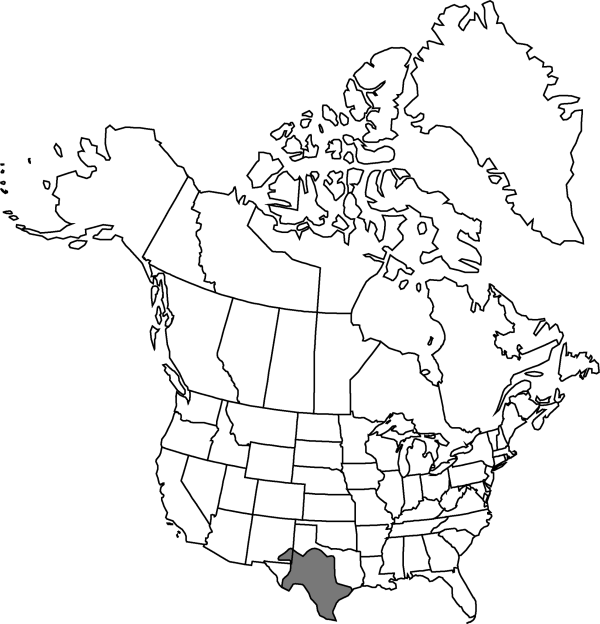Difference between revisions of "Echinocactus texensis"
Allg. Gartenzeitung 10: 297. 1842.
FNA>Volume Importer |
imported>Volume Importer |
||
| Line 51: | Line 51: | ||
|publication year=1842 | |publication year=1842 | ||
|special status= | |special status= | ||
| − | |source xml=https:// | + | |source xml=https://bibilujan@bitbucket.org/aafc-mbb/fna-data-curation.git/src/bb6b7e3a7de7d3b7888a1ad48c7fd8f5c722d8d6/coarse_grained_fna_xml/V4/V4_358.xml |
|subfamily=Cactaceae subfam. Cactoideae | |subfamily=Cactaceae subfam. Cactoideae | ||
|genus=Echinocactus | |genus=Echinocactus | ||
Revision as of 23:14, 27 May 2020
Plants unbranched (very rarely branched). Stems pale gray-green (desert populations) to grass green (eastern populations), above-ground portion flat-topped, hemispheric in old age but usually deep-seated, flush with soil surface, 10–30 × 10–30 cm; ribs 13–27, very prominent, straight, vertical, or sinuous on desiccated plants, crests ± sharp, without depressions between areoles but sometimes areoles recessed part way into rib. Spines (6–)7–8 per areole, mostly decurved or 1 porrect and straight, pale tan, pink, reddish to gray, terete to flattened, annulate, not hiding stem surfaces, minutely canescent with laterally compressed unicellular trichomes; radial spines (5–)6–7 per areole; central spine 1 per areole, porrect or descending, straight or distally decurved, (20–)40–60(–80) × 1.5–4(–8) mm. Flowers 5–6 × 5–6 cm; inner tepals bright rose-pink to pale silvery-pink, proximally orange to red, (15–)28–32 × (3–)6(–9) mm, margins usually erose; stigma lobes pink to pinkish white. Fruits indehiscent (rarely rupturing irregularly), scarlet or crimson, spheric to ovoid, 15–50 × 15–40 mm, fleshy, surfaces not hidden by widely spaced hairs in axils of scales; scales 13–21, distal scales spine-tipped, minutely puberulent. Seeds black, spheric-reniform or irregularly obovoid, 2.5–3 mm, glossy; testa cells flat or very slightly convex. 2n = 22.
Phenology: Flowering late spring.
Habitat: Chihuahuan Desert, grasslands, openings in oak woodlands, Tamaulipan thorn scrub, deep soils, saline flats, low limestone hills
Elevation: 0-1400 m
Distribution

N.Mex., Tex., Mexico (Coahuila, Durango, Nuevo León, Tamaulipas).
Discussion
The western, desert populations of Echinocactus texensis, unlike the eastern plants, have longer central spines that project stiffly outward and can flatten off-road vehicle tires or seriously injure a large mammal stepping on them. A dense cover of ephemeral herbs or shallow blanket of snow can hide this species completely from view.
Selected References
None.